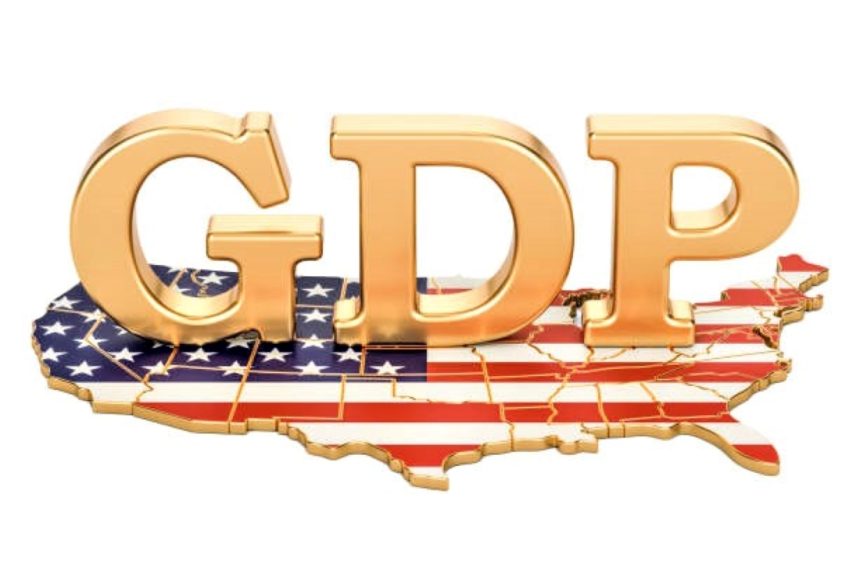US Fourth Quarter Gross Domestic Product Overview: The economy’s expansion expected to decrease. and USD Impact.
The US (GDP) assessment for the final quarter of the last year. Which will be announced by the BEA on Thursday afternoon. It will likely demonstrate the economy of the US expanding at a yearly pace of 2 percent. Extending the strong 4.9 percent increase reported in the quarter before it.
Following facing strong adverse effects in the fourth quarter of the year 2023, the U.S dollar able to rally in Jan. The DXY Gauge has risen roughly two percent over the start of the calendar year. While investors reconsider the precise moment of the Fed’s policy shift.
Key Highlights
The US GDP is expected to expand at a 2 percent annualized rate in the fourth quarter.
The strength of the American economy could enable the Federal Reserve to postpone the policy shift.
Markets are going to be paying close scrutiny to the Real Domestic Prices Deflator figure.
| Quarterly – Percentage Change from last Quarter | |
| Q3 2023 (3rd) | +3.3 % |
| Q2 2023 | +1.7 % |
The GDP implied price deflator, tracks fluctuations in the cost of services and goods produced by the US, which include those shipped to different nations. Prices for imports have been omitted
Source: BEA
US GDP Projections
the day’s American economic calendar includes the publication of initial GDP data of the Q4 at 13:30 GMT today. The initial projection is anticipated to reveal the largest economy in the world expanded by 2 percent in the last 3-months of the year of 2023. Which is a respectable rate but having significantly less compared to the 4.9 percent increase in the previous quarter.
Inventories buildup were the primary generator of the rise in the Q3. Given that that aspect typically moves in a reverse direction about quarterly to figures. A sharp decrease in the pace of growth around the conclusion of 2023 shouldn’t be surprising.
Marketplace investors are going to pay close scrutiny to the GDP Price Deflator data, also referred to as the GDP Price Score. That tracks shifts in the value of US-produced services and commodities. The Gross Domestic Product Price Deflator increased to 3.3 percent in the 3rd-quarter. A rise from 1.7 per cent in the second quarter. showing that price inflation had a greater beneficial effect on expansion versus the quarter prior.
Reviewing the US GDP development report. As a measure of economic production, we believe the US economy to have posted a under-trend of 1.6 percent Q to Q Growth in 23 4th Q. Considerably smaller than 3rd Q’s spectacular and untenable 4.9 percent raise.
The Impact of US dollar
The U.S GDP data is scheduled to be announced at 13:30 GMT today. Prior of the occurrence, the U.S. dollar remains robust versus its peers. With increased anticipation of a postponement in the Fed’s planned rate decrease.
Although the US Federal Reserve’s seclusion period began on the 21st of January. A few officials pressed down over market expectations of a 25 bps Fed rate drop in the month of March. The San Francisco Fed (Daly) says she feels that the Fed still has quite a bit of legwork to do in order to get prices lower to the US Fed’s 2 percent objective. Arguing that it may be too soon to expect “rate reductions near the bend.”
A stronger-than-expected growth in GDP in 4th Q could play into predictions. Which the Federal Reserve would not decrease interest rates in March. Boosting the US dollar’s value in the short term. If a GDP number approaches the consensus expectation at 2 percent, a GDP Prices Deflator reading of 3 percent or higher. It may assist the U.S. dollar keep its footing, whilst a drop to 2 percent could harm the dollar’s value.
On the contrary side, an increase under 1.5 percent may undermine the “gentle arrival” story. In this situation, investors may tilt towards the U.S Fed rate decrease in March of this year. Prompting U.S. government bond yields to fall & the dollar to lose ground versus its primary competitors.
Technical Analysis
The daily graph’s RSI metric is close to 60, showing a positive tilt in the short term. The 200 D-SMA pivots around 103.50. If the DXY settles over the mark, then begins to use it for assistance. Bulls goals might be established around 104.40 (100 D SMA) then 105.00 (psychological threshold). On the other hand, the Fibonacci ratio’s 38.2% of the retrace of the Oct to Dec downturn provides ample resistance at 103.00 level towards 102.50 D-SMA plus 102.00 (Fibonacci sequence 23.6 percent recession).









